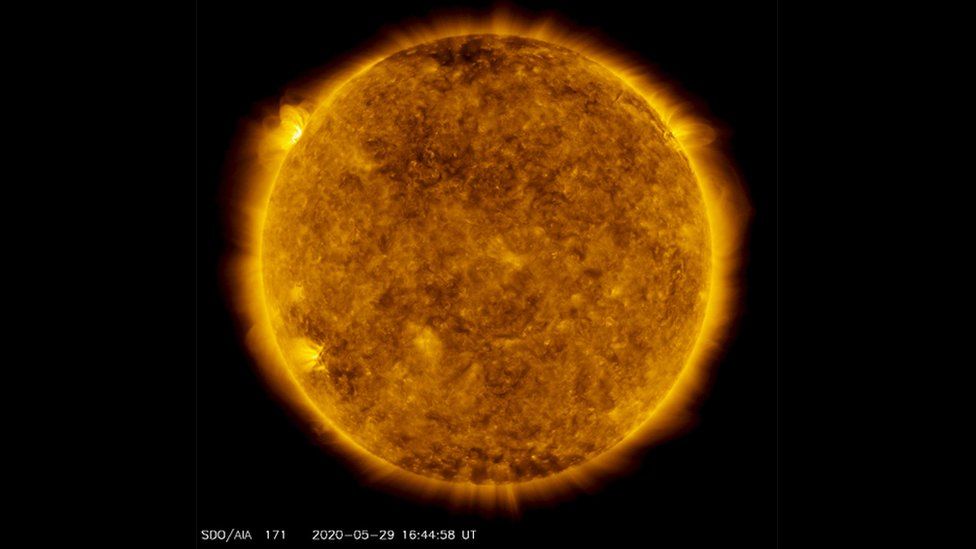Solar flares: How the Sun could be ‘waking up’ after a quiet patch
- Published
- comments

Scientists think the Sun might be 'waking up' after being quiet for a few years.
A Nasa spacecraft has discovered a new group of sunspots on the surface of our star.
This could mean that the Sun is 'waking up' and becoming more active - it might also mean we see some solar flares heading our way.
This happens every few years as part of the Sun's solar cycle.
Scientists have said that the current activity is not strong enough to set off any alerts for space weather, but that a small flare did cause a minor radio disruption.
What is a solar flare?
Solar flares are powerful bursts of radiation from the Sun's surface.
Flares start around areas known as sunspots.
What is the solar cycle?
The solar cycle takes around 11 years
Our Sun is a huge ball of super-hot electrically-charged gas, which creates a powerful magnetic field.
This magnetic field goes through a cycle every 11 years or so, where the Sun's North and South poles swap places - this is called the solar cycle.
As these magnetic fields change over the years, so does the amount of activity on the Sun's surface.
The middle of the solar cycle is when the Sun is most active, and when it has the most sunspots.
Watch this enormous solar flare from 2017
Giant eruptions like solar flares or coronal mass ejections also increase during this time, sending powerful bursts of energy into space.
This energy can impact things here on Earth. For example it can cause auroras, interrupt radio communication and even affect our electricity grids.
Fortunately, these solar flares can't pass through the Earth's atmosphere to affect humans on the ground.
Some cycles are more powerful than others, and scientists try to help predict this space weather to give people on Earth, and astronauts in orbit, a heads up.
- Published3 October 2014
- Published14 April 2019
- Published7 March 2018
- Published6 January 2020
